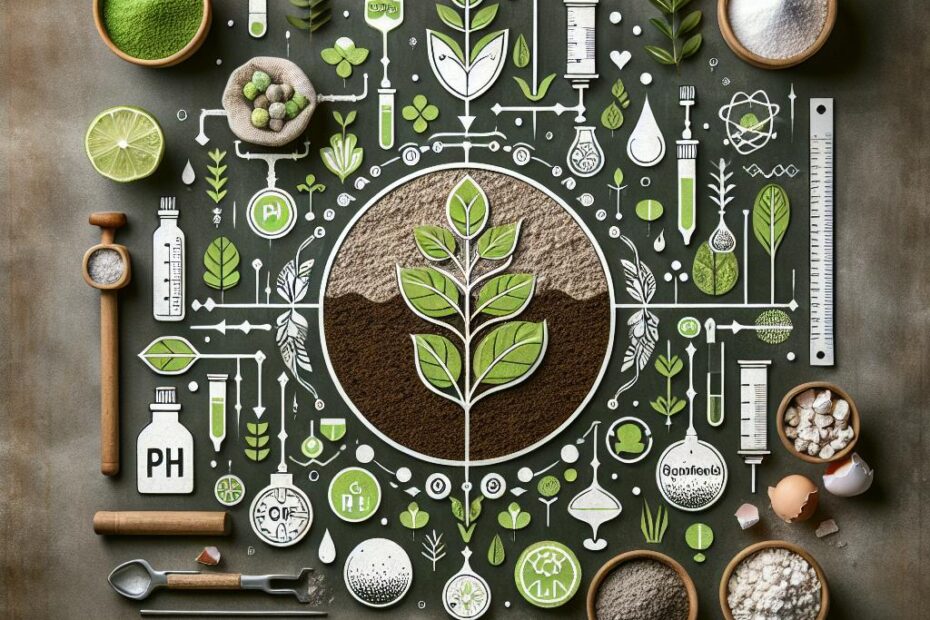Title: How to Make Acidic Soil More Alkaline: Tips and Tricks for Healthier Plants
Introduction:
Are you struggling with acidic soil in your garden? Acidic soil can present challenges for plants that prefer neutral or alkaline soil conditions. However, with the right strategies and techniques, you can effectively raise the pH level of your soil and create a healthier environment for your plants to thrive. In this article, we will explore how to make acidic soil more alkaline, sharing valuable tips and tricks to help you achieve success in your gardening endeavors.
Understanding Soil pH:
Soil pH is a measurement of the acidity or alkalinity of the soil, ranging from 0 to 14 on the pH scale. A pH of 7 is considered neutral, while anything below 7 is acidic and anything above 7 is alkaline. Most plants prefer a slightly acidic to neutral pH level, around 6.0 to 7.0, for optimal growth and nutrient uptake.
Benefits of Alkaline Soil:
- Improved nutrient availability: Alkaline soil allows for better absorption of essential nutrients by plants, promoting healthy growth and development.
- Enhanced microbial activity: Beneficial soil microbes thrive in alkaline conditions, contributing to soil fertility and plant health.
- Disease prevention: Some plant diseases are more prevalent in acidic soil, so raising the pH level can help prevent these issues.
How to Make Acidic Soil More Alkaline:
-
Test Your Soil: Before making any adjustments, it’s essential to test the pH of your soil to determine the current level of acidity. Soil test kits are readily available at garden centers and can provide accurate results.
-
Add Lime: One of the most common methods for raising soil pH is to add agricultural lime, also known as garden lime. This natural substance contains calcium carbonate, which helps neutralize acidity and increase alkalinity. Follow the instructions on the lime package for proper application rates.
| Lime type | Application rate |
| Dolomitic lime | 5-10 pounds per 100 square feet |
| Calcitic lime | 10-15 pounds per 100 square feet |
-
Use Wood Ash: Wood ash from your fireplace or bonfire can also be used to raise soil pH. Wood ash contains potassium and calcium carbonate, which can help neutralize acidity and increase alkalinity. Apply wood ash sparingly, as excessive use can raise pH levels too high.
-
Add Organic Matter: Incorporating organic matter such as compost, manure, or leaf mold can help improve soil structure and fertility, as well as buffer pH levels. Organic matter acts as a natural pH buffer, helping to maintain a more stable pH over time.
Practical Tips for Success:
- Monitor pH levels regularly to ensure they remain within the optimal range for your plants.
- Adjust pH gradually over time to avoid sudden changes that can stress plants.
- Choose plants that are well-suited to your soil’s pH level for best results.
Case Study:
Mary, a passionate gardener, struggled with acidic soil in her backyard garden. After testing her soil and discovering a pH of 5.5, she decided to add dolomitic lime to raise the pH level. Mary followed the application instructions and monitored her soil pH over the following weeks. Within a few months, her plants were thriving in the now alkaline soil, thanks to her diligent efforts.
Conclusion:
Making acidic soil more alkaline can be a rewarding endeavor that leads to healthier, more vibrant plants in your garden. By following the tips and tricks outlined in this article, you can successfully raise the pH level of your soil and create an optimal growing environment for your plants. Remember to test your soil, choose the right amendments, and monitor pH levels regularly for long-term success. With a little effort and know-how, you can transform acidic soil into a thriving garden paradise for all your favorite plants.
Remember that the process of adjusting soil pH can take time, so be patient and consistent with your efforts. By making gradual improvements and maintaining balanced soil conditions, you can enjoy a lush and beautiful garden for years to come. Happy gardening!
